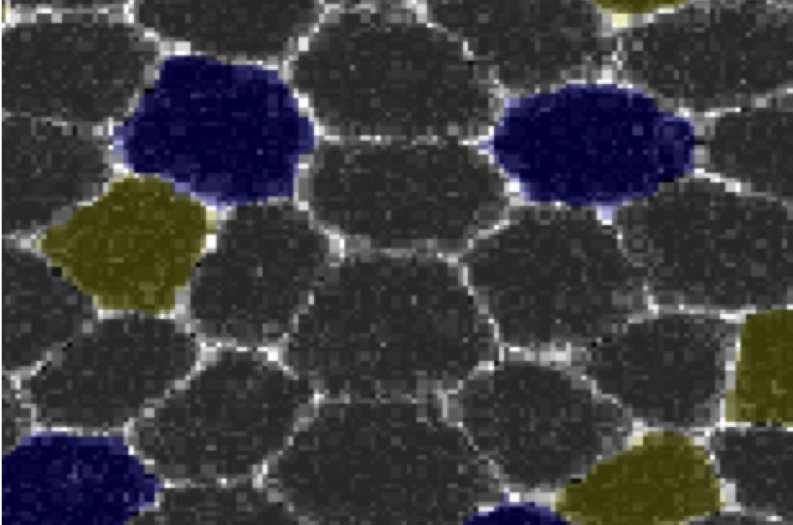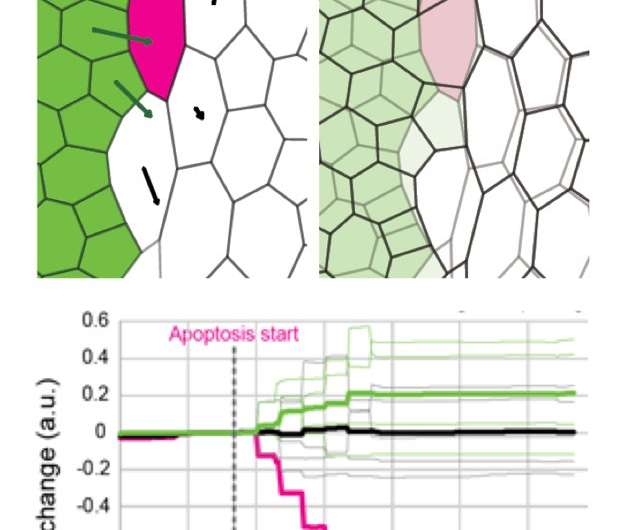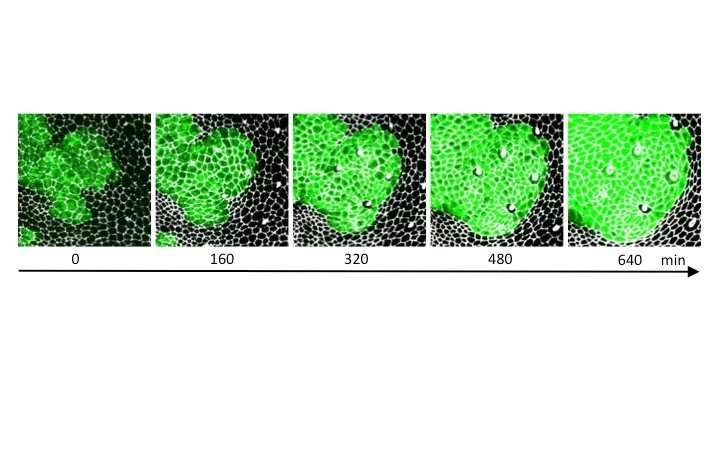Competition for space—oncogenic mutant cells vs normal cells

Cells in multicellular tissues adhere to each other. Epithelial tissues on the surface layer of the intestines and skin pack cells into a hexagonal (honeycomb) pattern, with cells adhering tightly to the six cells adjacent to them (Fig. 1). The whole tissue can be represented as a network, and body function is maintained by keeping this basic adhesion network intact.
During the initial stage of tumor progression, oncogenic mutant cells (precancer cells) and normal cells compete for space in the adhesion network of normal tissues. However, how oncogenic mutant cells selectively occupy the space had not been understood. It was thought that oncogenic mutant cells multiplied via cell division faster than normal cells, but this was not verified.
A group of researchers led by Koichi Fujimoto at Osaka University analyzed the state of oncogenic mutant cells present in normal multicellular tissues based on prediction by computer simulation and experimental verification.
Contrary to expectations, only oncogenic mutant cells selectively expanded their area without cell division after the death of normal cells, occupying the space lost by apoptosis (Fig. 2). In addition, oncogenic cells expanded through rearrangement of the honeycomb packing pattern in favor of the expansion of oncogenic mutant cells. Following the repeated removal of normal cells and rearrangement of adjacent cells, tissues consisting of a few hundreds of cells turned into oncogenic mutant cells within a few hours (Fig. 3). These results were published in Current Biology.

Lead author Alice Tsuboi said, "In simulations used in this study, modeling is developed based on shape analogies between cells of a multicellular tissue and soap bubbles (polygons). Cells and bubbles are composed of different molecules, but they share the ability to produce physical properties such as surface tension. By incorporating biological knowledge into simulations, we were able to predict new phenomena and mechanisms."
This group's achievements will promote an understanding of the initial stage of tumor progression in which oncogenic mutant cells spread to normal tissues and cause cancer. In addition, research on multicellular tissues based on prediction via a combination of computer simulation and experimental verification will find wide application, ranging from normal development of living organisms to the development of diseases.

More information: Alice Tsuboi et al. Competition for Space Is Controlled by Apoptosis-Induced Change of Local Epithelial Topology, Current Biology (2018). DOI: 10.1016/j.cub.2018.05.029
Journal information: Current Biology
Provided by Osaka University




















